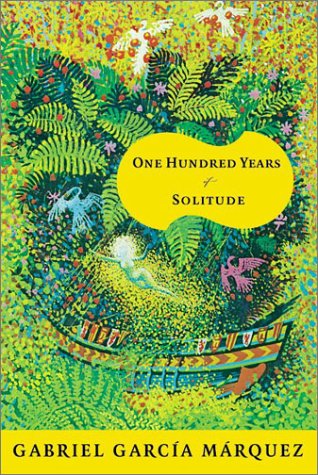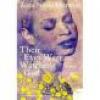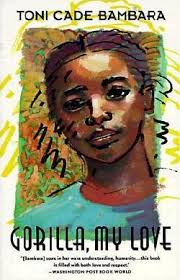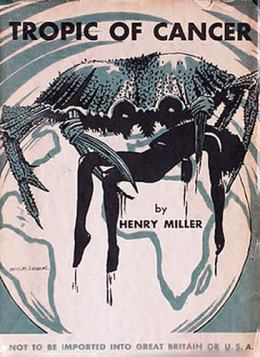Author Photo And Bio
 1. One Hundred Years of Solitude by Gabriel García Márquez (1967). Widely considered the most popular work in Spanish since Don Quixote, this novel —part fantasy, part social history of Colombia — sparked fiction’s “Latin boom” and the popularization of magic realism. Over a century that seems to move backward and forward simultaneously, the forgotten and offhandedly magical village of Macondo — home to a Faulknerian plethora of incest, floods, massacres, civil wars, dreamers, prudes, and prostitutes — loses its Edenic innocence as it is increasingly exposed to civilization.
1. One Hundred Years of Solitude by Gabriel García Márquez (1967). Widely considered the most popular work in Spanish since Don Quixote, this novel —part fantasy, part social history of Colombia — sparked fiction’s “Latin boom” and the popularization of magic realism. Over a century that seems to move backward and forward simultaneously, the forgotten and offhandedly magical village of Macondo — home to a Faulknerian plethora of incest, floods, massacres, civil wars, dreamers, prudes, and prostitutes — loses its Edenic innocence as it is increasingly exposed to civilization.
 2. A Streetcar Named Desire by Tennessee Williams (1947). Set in the once working-class French Quarter of New Orleans, Williams tells the story of Blanche DuBois, an alcoholic relic of the waning genteel South, and her brother-in-law, the sensuous working-class brute Stanley Kowalski. Their mutual attraction and repulsion drive the conflict in this sexually frank, lyrical melodrama about the boundaries between illusion and reality and the changing South.
2. A Streetcar Named Desire by Tennessee Williams (1947). Set in the once working-class French Quarter of New Orleans, Williams tells the story of Blanche DuBois, an alcoholic relic of the waning genteel South, and her brother-in-law, the sensuous working-class brute Stanley Kowalski. Their mutual attraction and repulsion drive the conflict in this sexually frank, lyrical melodrama about the boundaries between illusion and reality and the changing South.
 3. Their Eyes Were Watching God by Zora Neale Hurston (1937). Beautiful and high-spirited Janie Crawford wants love and adventure. But, as Hurston shows in her finest novel, living in an all-black town is no shield against the sexism that dictates her young life. Forced to marry one controlling old geezer, she deserts him only to end up with another. When she marries Tea Cake, Janie finally enjoys the essence of a true relationship. Her happiness is short-lived when disaster strikes, but it becomes the catalyst for ultimate self-discovery.
3. Their Eyes Were Watching God by Zora Neale Hurston (1937). Beautiful and high-spirited Janie Crawford wants love and adventure. But, as Hurston shows in her finest novel, living in an all-black town is no shield against the sexism that dictates her young life. Forced to marry one controlling old geezer, she deserts him only to end up with another. When she marries Tea Cake, Janie finally enjoys the essence of a true relationship. Her happiness is short-lived when disaster strikes, but it becomes the catalyst for ultimate self-discovery.
 4. To Kill a Mockingbird by Harper Lee (1960). Tomboy Scout and her brother Jem are the children of the profoundly decent widower Atticus Finch, a small-town Alabama lawyer defending a black man accused of raping a white woman. Although Tom Robinson’s trial is the centerpiece of this Pulitzer Prize–winning novel —raising profound questions of race and conscience —this is, at heart, a tale about the fears and mysteries of growing up, as the children learn about bravery, empathy, and societal expectations through a series of evocative set pieces that conjure the Depression-era South.
4. To Kill a Mockingbird by Harper Lee (1960). Tomboy Scout and her brother Jem are the children of the profoundly decent widower Atticus Finch, a small-town Alabama lawyer defending a black man accused of raping a white woman. Although Tom Robinson’s trial is the centerpiece of this Pulitzer Prize–winning novel —raising profound questions of race and conscience —this is, at heart, a tale about the fears and mysteries of growing up, as the children learn about bravery, empathy, and societal expectations through a series of evocative set pieces that conjure the Depression-era South.
5. A Raisin in the Sun by Lorraine Hansberry (1959). Hansberry’s award-winning play was the first by a black woman to be produced on Broadway. It focuses on the Youngers, a struggling African American family in 1950s Chicago, who must decide how to spend the $10,000 insurance money Mama collects from her deceased husband. Mama wants a home, her daughter Beneatha an education, and her son Walter a business. What ensues is a generational debate over values and whether or not African Americans can realize the American Dream.
 6. Gorilla, My Love by Toni Cade Bambara (1972). A feminist and civil rights activist, Bambara strove to create literature that reflected the experiences of black women, the strength of black communities from the urban North to the rural South, and the challenges they faced. Showcasing Bambara’s talent for transforming her social concerns into art, the fifteen stories in this collection feature sharp-tongued first-person narrators who draw on their charm, resolve, and compassion to triumph over —or at least make peace with —life’s obstacles.
6. Gorilla, My Love by Toni Cade Bambara (1972). A feminist and civil rights activist, Bambara strove to create literature that reflected the experiences of black women, the strength of black communities from the urban North to the rural South, and the challenges they faced. Showcasing Bambara’s talent for transforming her social concerns into art, the fifteen stories in this collection feature sharp-tongued first-person narrators who draw on their charm, resolve, and compassion to triumph over —or at least make peace with —life’s obstacles.
 7. Tropic of Cancer by Henry Miller (1934). Banned in America for twenty-seven years because it was considered obscene, this autobiographical novel describes the author’s hand-to-mouth existence in Paris during the early 1930s. A later inspiration to the Beat generation, Miller offers various philosophical interludes expressing his joy in life, hostility to social convention, and reverence for women and sex, which he describes with abandon.
7. Tropic of Cancer by Henry Miller (1934). Banned in America for twenty-seven years because it was considered obscene, this autobiographical novel describes the author’s hand-to-mouth existence in Paris during the early 1930s. A later inspiration to the Beat generation, Miller offers various philosophical interludes expressing his joy in life, hostility to social convention, and reverence for women and sex, which he describes with abandon.
 8. Hedda Gabler by Henrik Ibsen (1890). Like Anna Karenina and Emma Bovary, Hedda Gabler is trapped in a loveless marriage, which she entered into for security and cannot leave for fear of scandal. Though she is “crowing for life,” societal norms constrict her, making Hedda a manipulative and frustrated woman. The appearance of her former lover —a brilliant, debaucherous writer —unspools a string of betrayals that end in death in this feminist play that showcases Ibsen’s ability to dramatize the burning social issues of his day.
8. Hedda Gabler by Henrik Ibsen (1890). Like Anna Karenina and Emma Bovary, Hedda Gabler is trapped in a loveless marriage, which she entered into for security and cannot leave for fear of scandal. Though she is “crowing for life,” societal norms constrict her, making Hedda a manipulative and frustrated woman. The appearance of her former lover —a brilliant, debaucherous writer —unspools a string of betrayals that end in death in this feminist play that showcases Ibsen’s ability to dramatize the burning social issues of his day.
 9. China Men by Maxine Hong Kingston (1980). Kingston won the National Book Award for this richly detailed, multigenerational novel about the Chinese American experience. Drawing on ancient legends, family lore, and history, she begins in the 1840s, with the building of the transcontinental railroad, and continues through the challenges posed by the Vietnam War era.
9. China Men by Maxine Hong Kingston (1980). Kingston won the National Book Award for this richly detailed, multigenerational novel about the Chinese American experience. Drawing on ancient legends, family lore, and history, she begins in the 1840s, with the building of the transcontinental railroad, and continues through the challenges posed by the Vietnam War era.
 10. The Grapes of Wrath by John Steinbeck (1939). A powerful portrait of Depression-era America, this gritty social novel follows the Joad family as they flee their farm in the Oklahoma dust bowl for the promised land of California. While limping across a crippled land, Ma and Pa Joad, their pregnant daughter Rose of Sharon, and their recently paroled son Tom sleep in ramshackle Hoovervilles filled with other refugees and encounter hardship, death, and deceit. While vividly capturing the plight of a nation, Steinbeck renders people who have lost everything but their dignity.
10. The Grapes of Wrath by John Steinbeck (1939). A powerful portrait of Depression-era America, this gritty social novel follows the Joad family as they flee their farm in the Oklahoma dust bowl for the promised land of California. While limping across a crippled land, Ma and Pa Joad, their pregnant daughter Rose of Sharon, and their recently paroled son Tom sleep in ramshackle Hoovervilles filled with other refugees and encounter hardship, death, and deceit. While vividly capturing the plight of a nation, Steinbeck renders people who have lost everything but their dignity.